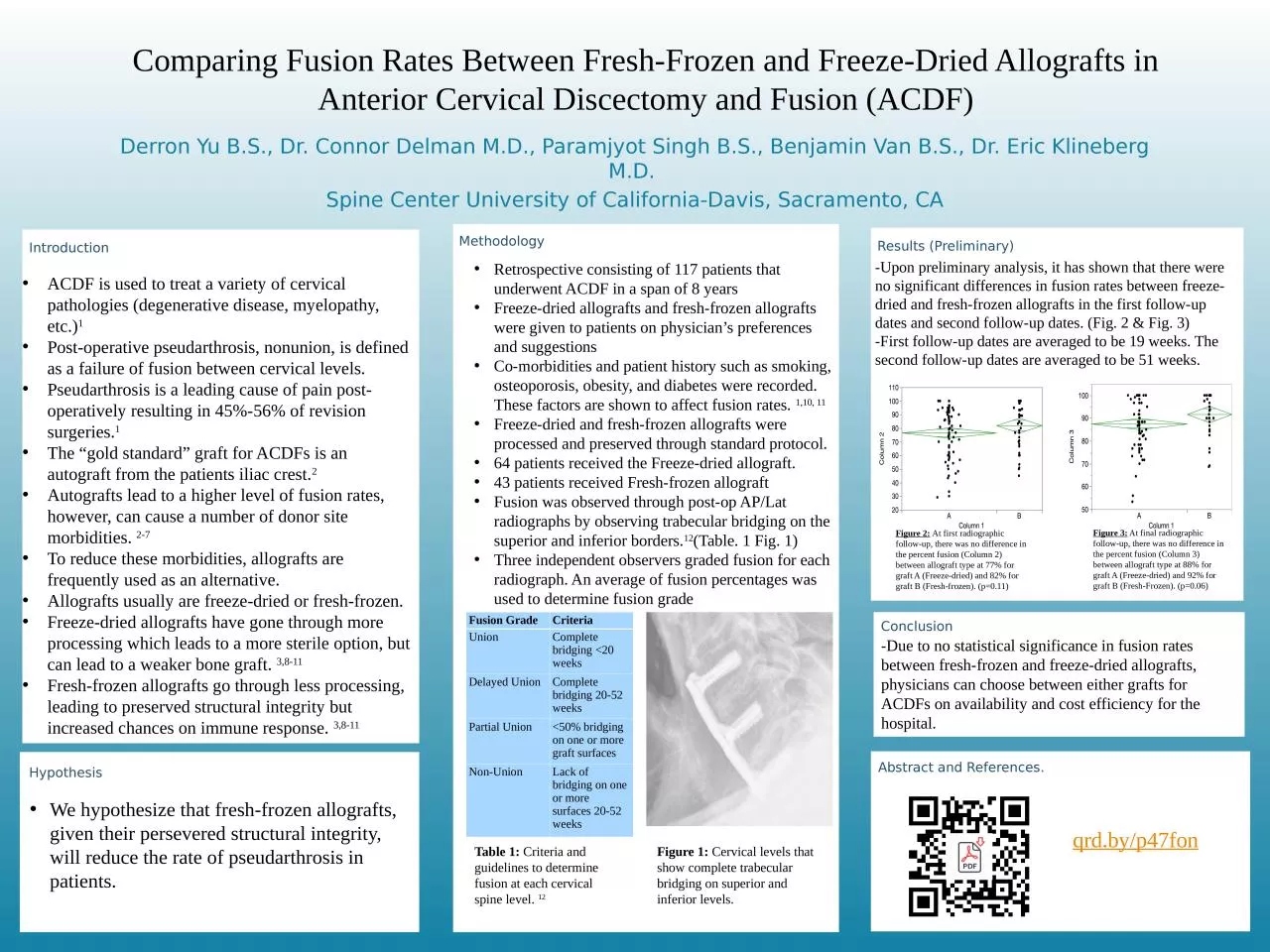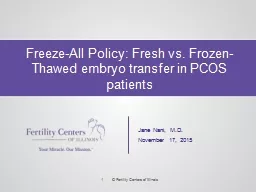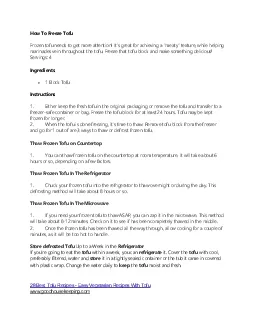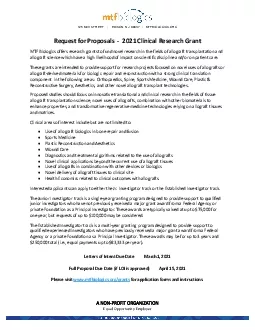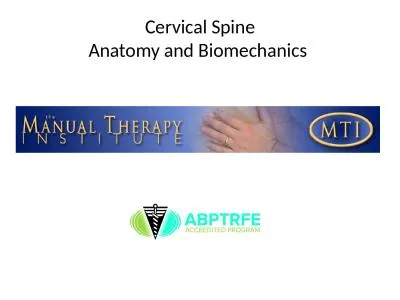PPT-Comparing Fusion Rates Between Fresh-Frozen and Freeze-Dried Allografts in Anterior Cervical
Author : pamela | Published Date : 2023-07-07
Derron Yu BS Dr Connor Delman MD Paramjyot Singh BS Benjamin Van BS Dr Eric Klineberg MD Spine Center University of CaliforniaDavis Sacramento CA Abstract and
Presentation Embed Code
Download Presentation
Download Presentation The PPT/PDF document "Comparing Fusion Rates Between Fresh-Fro..." is the property of its rightful owner. Permission is granted to download and print the materials on this website for personal, non-commercial use only, and to display it on your personal computer provided you do not modify the materials and that you retain all copyright notices contained in the materials. By downloading content from our website, you accept the terms of this agreement.
Comparing Fusion Rates Between Fresh-Frozen and Freeze-Dried Allografts in Anterior Cervical: Transcript
Download Rules Of Document
"Comparing Fusion Rates Between Fresh-Frozen and Freeze-Dried Allografts in Anterior Cervical"The content belongs to its owner. You may download and print it for personal use, without modification, and keep all copyright notices. By downloading, you agree to these terms.
Related Documents

